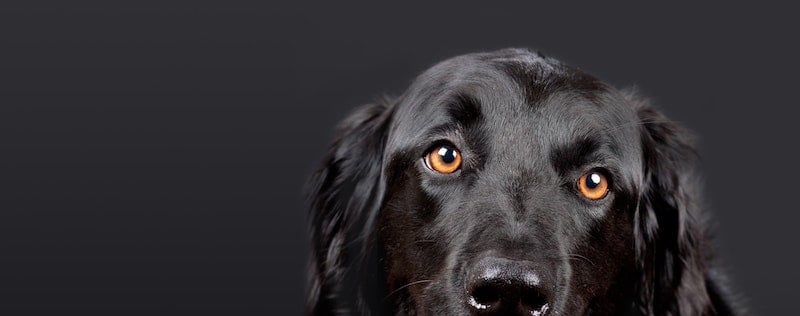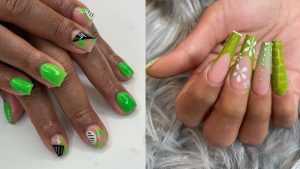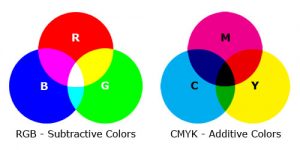In the early 1990s, there was a music video by solo artist Phil Collins (formerly the lead singer of the band Genesis) frequently show on music television channels. The video follows a dog’s field of view. Sometimes the video has color to it, but when the camera switches lower and is meant to be what the dog is seeing, the video is in black and white.
This discrepancy is probably due to the incorrect belief that dogs only see in black and white. This was an opinion widely held by world-renowned veterinarians for many years. To be fair to Phil Collins, the myth that dogs were colorblind persisted for many years and still does to this day.
Dogs CAN See Colors

It is now understood that dogs CAN see color. The colors just aren’t as sharp or bright for dogs as the way humans see color. The difference is the number of cones humans have versus how many dogs have. Each cone catches a different wavelength of color. Having only two cones puts dogs at a disadvantage.
What are cones? The retina has special photoreceptor cells called cones. The cones send signals to the brain, which analyzes and perceives the signal into a shade of color. Each cone is tuned to a different wavelength of light, allowing humans to see a larger variety of colors than dogs.
Research done by scientist Jay Neitz at the University of California, Santa Barbara showed that dogs DO see color. The tests involved showing dogs three lights panels in a row and the dog was to identify which of the panels was different and press it. The panels had two of the same color and one that was different. When the dog was correct, a treat would be delivered to a cup below the correct panel.
Dogs are very intelligent and are known to learn quickly, especially if treats are involved. The results of these test trials led Neitz to conclude that dogs can see and differentiate between some colors, just on a different color spectrum that humans can see.
Which Colors Can Dogs See?

The color tests performed by Neitz proved to him that while dogs can see color, they see fewer colors than humans do. Humans have three cones that can see the difference between yellow, violet and green. For dogs, all three of those colors would look like varying shades of yellow.
Many dog toys sold in stores are red in color, but it turns out that red looks like a dark grey to dogs! Perhaps your dog CAN catch – you’re just throwing the wrong color toy. Green is another color that looks grey to dogs.
So, instead of dogs seeing in black and white, they see in muted colors and grey.
What Colors Do Dogs See Best?

Humans are able to see the intensity of colors such as red, green and blue. With only two cones in their retinas, dogs perceive the intensity of blue and yellow the best. Other colors appear as different shades of grey.
Dogs can’t see colors such as violet, green or orange. To dogs, these colors are all varying shades of yellow.
Now we know why dogs love yellow tennis balls so much!
Remember that next time you go to the pet store to buy your pup a toy – stick to blue or yellow toys and skip the red ones.
Can Dogs Be Colorblind?
Some humans are colorblind because they only have two cones instead of the usual three. That means a person who is colorblind has a closer color spectrum to the ones dogs have than to the ones humans have.
It is entirely possible for dogs to be colorblind If they are born with just one cone in their retinas instead of the typical two. However, how would you even know? You can’t take your pup to the eye doctor for an exam.
If you want to experiment with your dog’s color vision, you should do it while they are young. Older dogs of all breeds are prone to cataracts and other eye problem that can cause blindness or low vision.
Do Dogs Need Glasses?

Believe it or not, you CAN get prescription glasses for your dog! Back in 2014, the brand Doggles that manufactures protective eyewear for dogs began to sell dog goggles that were intended to help dogs with poor vision see better.
Protective eyewear is important if your dog is included in activities such as motorcycle rides, skydiving and things of that nature. Vets even recommend dog goggles be worn if your dog is sticking its head of out of the car window, as debris can harm or infect their eyes.
Regular dog goggles can be purchased in any pet store, but the vision-correcting goggles have to be ordered from a veterinarian.
Dogs See Better Than Humans at Night
Dogs aren’t always at a disadvantage when it comes to their sight. Those cones that only let them see muted colors work better in dim light than the three cones humans have. Dogs can see in light that is five times dimmer than what humans can see.
This is why your dog is able to easily maneuver the yard at night while you can barely spot your pup outside in the dark if their fur isn’t white. Reflective collars are for the human, not the dog.
More Than Black and White
The next time you see a movie pan to a dog’s view and the screen changes to black and white, you will know that the movie is incorrect because dogs can see in color. While their vision might not be great, a dog’s sense of smell and hearing more than make up for their lack of color perception.
If you’ve ever watched dog agility competitions, you might have wondered why some of the equipment was in blues and yellows. Now you know and you can keep the information in mind the next time you go to a pet store to pick up a new toy for your pooch.






